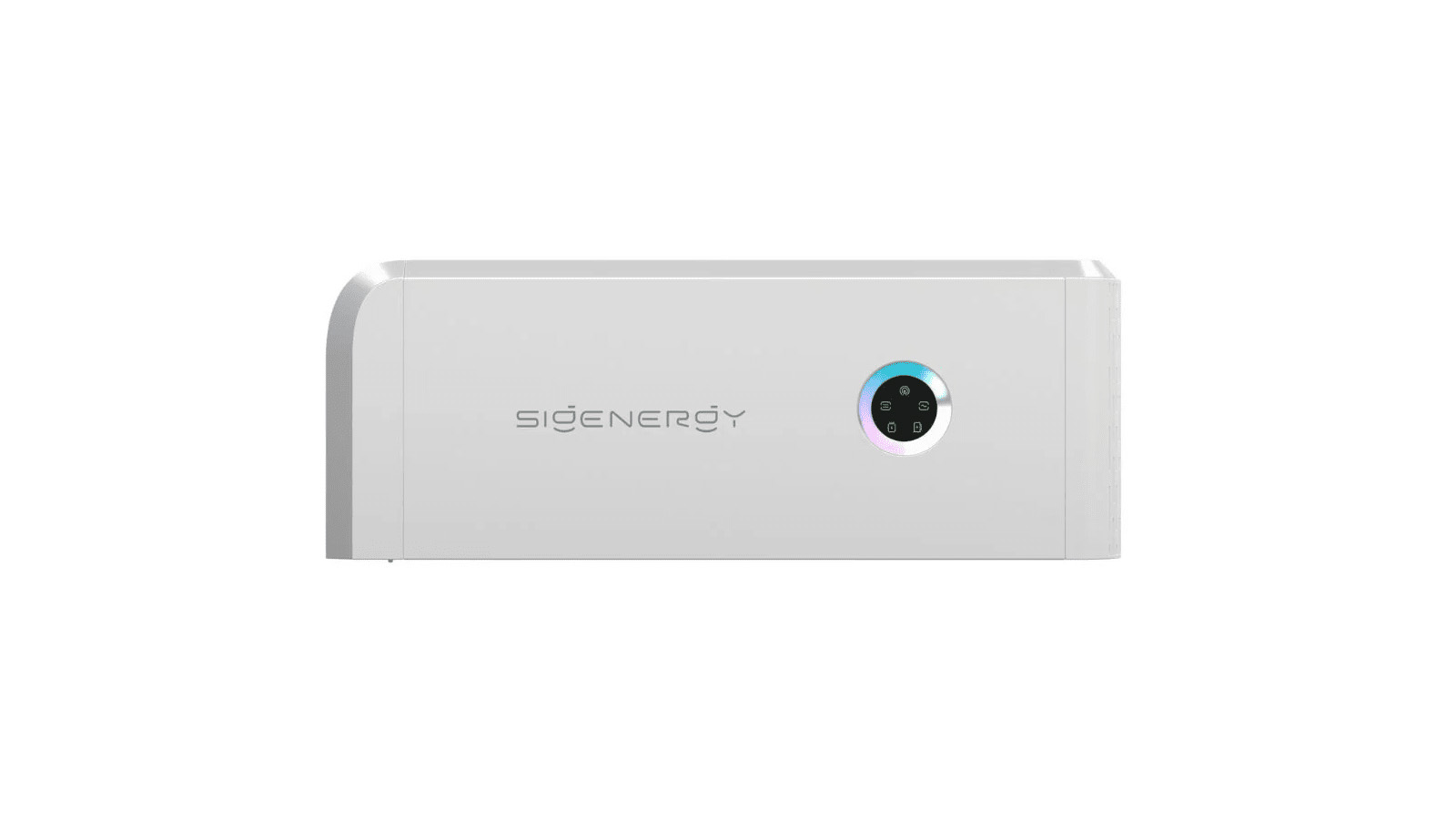System components
We have built our home with a complete solar energy solution. The system consists of three main components that together enable us to produce, store, and use renewable energy in a smart and efficient way.

Solar panels
We use 20 DM450M10RT-B54HBT panels from DMEGC, among the most efficient panels on the market. The panels are mounted in two directions – 8 facing east and 12 facing west – which provides a more even production throughout the day.
Total production capacity:
Maximum installed capacity: 20 × 450 Wp = 9 kW
Practical peak output: approx. 5.4 kW (due to orientation and real operating conditions)
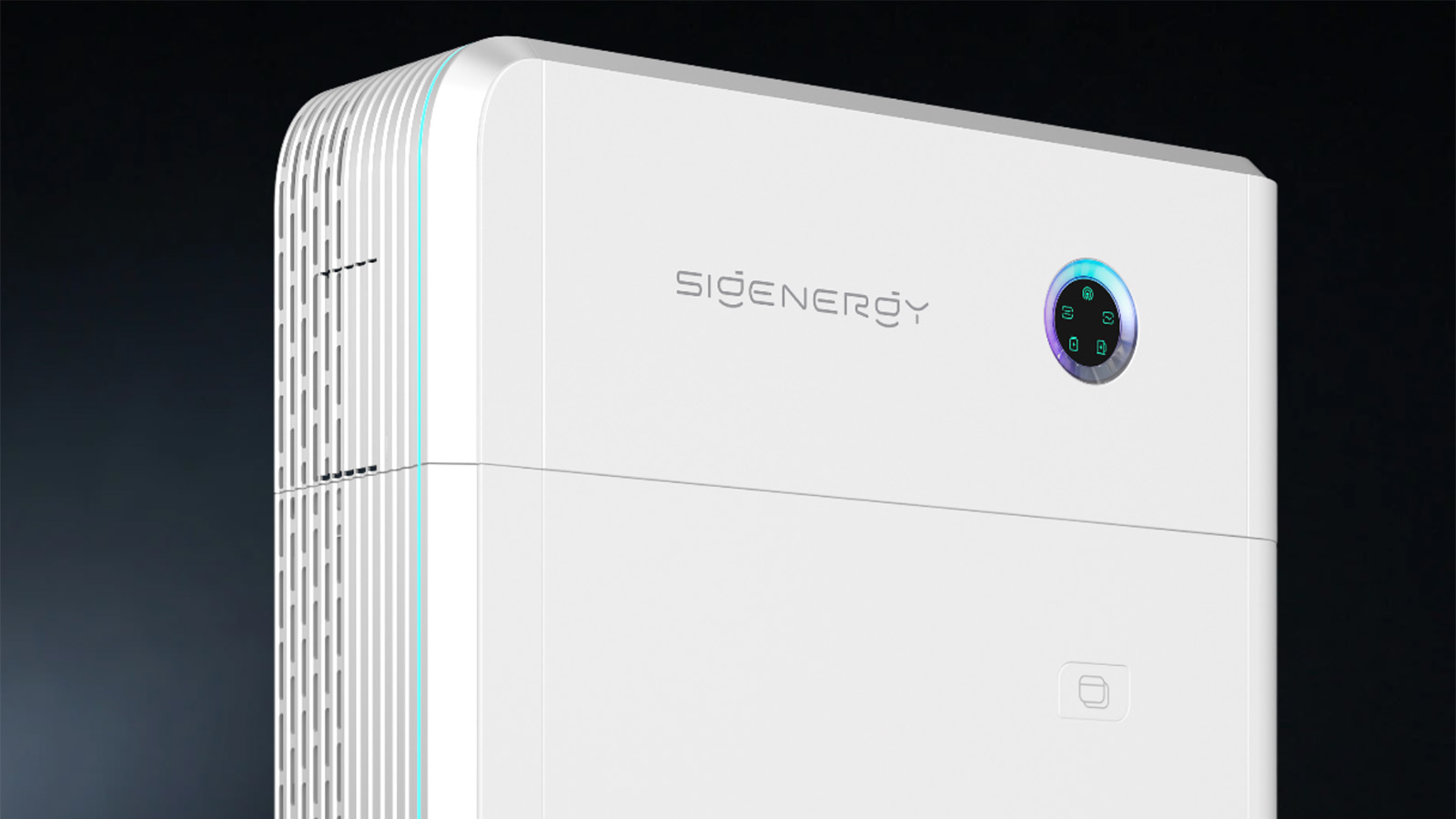
Battery and inverter
To be able to use solar energy even when the sun isn’t shining, we have installed two Sigen Battery modules of 8 kWh each, providing a total storage capacity of 16 kWh.
The capacity is sufficient to cover a large share of our household’s needs in the evening and at night, reducing the need to buy expensive electricity from the grid during peak demand.
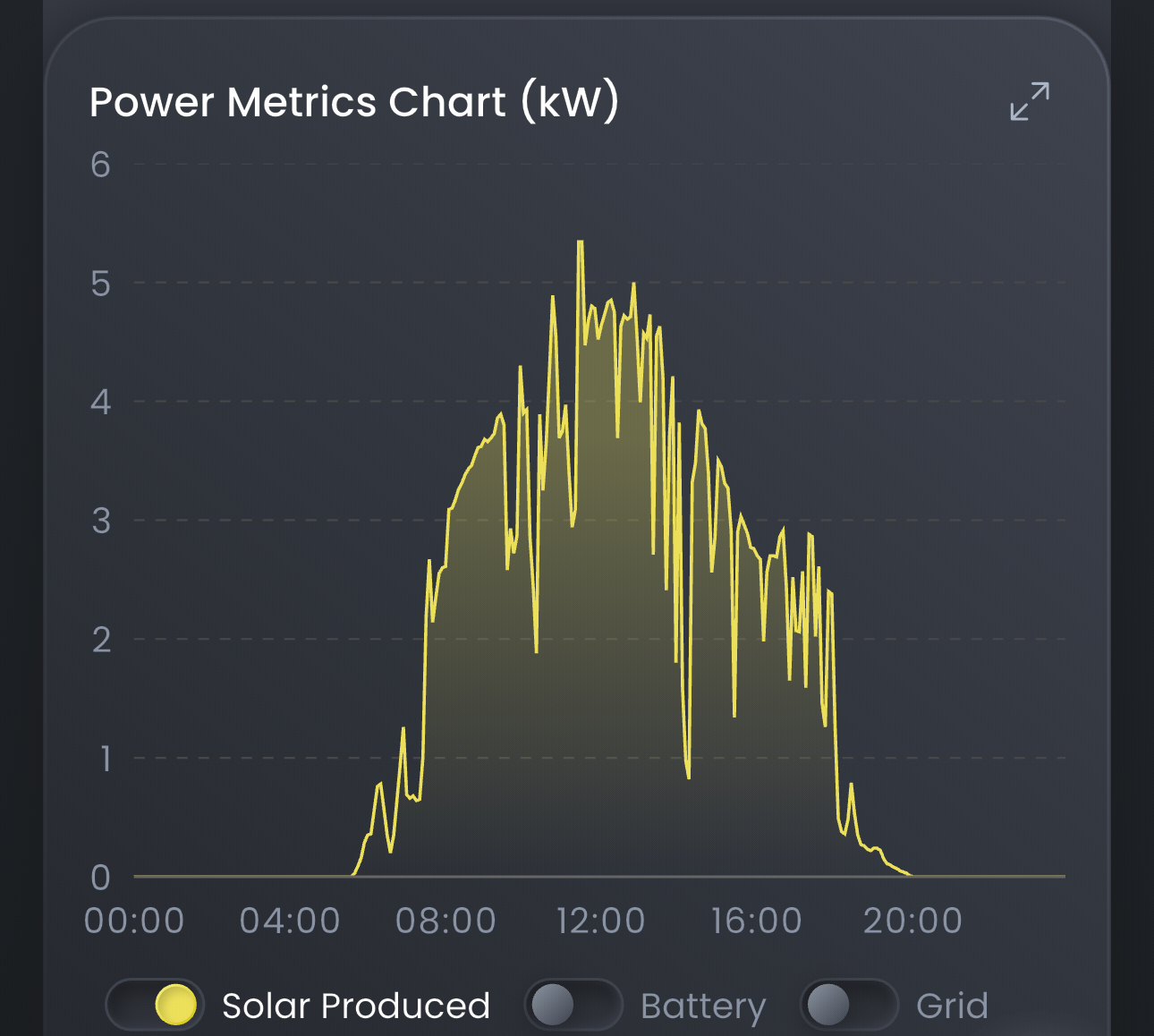
Solar panels
We use DM450M10RT-B54HBB panels from DMEGC, among the most efficient panels on the markets
Technical specifications:
– Output: 450 Wp per panel
– Power density: 225 Wp/m²
– Module efficiency: 22.5%
– Cell technology: 108 half-cut monofacial cells, N-Type TOPCon
– Construction: Dual-glass module with 2.0 mm glass on both front and back
– Dimensions: 1762 × 1134 × 30 mm
– Weight: 22 kg
The panels deliver high power on a small surface and have a long lifespan thanks to the dual-glass design. The advanced TOPCon technology also provides better performance in low-light conditions and higher resistance to degradation over time.
This east/west configuration gives us a broader production curve throughout the day, which means less dependence on solar peaks at midday and better alignment with the household’s energy consumption.
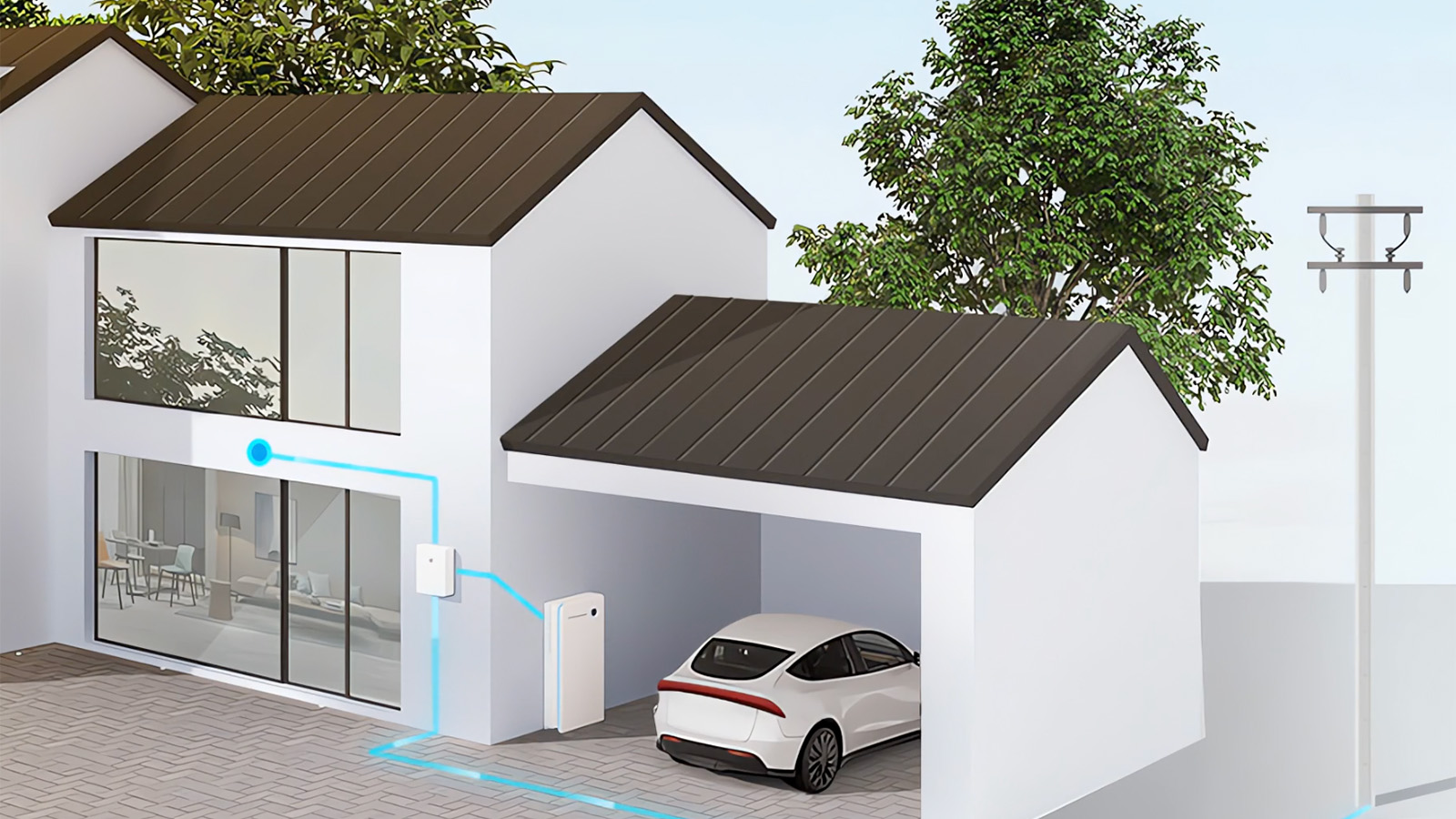
Inverter and batteries
We use a Sigenergy SigenStor EC 10.0TP – a high-performance hybrid inverter with an integrated battery controller.
Technical specifications:
– Power: 10 kW
– Efficiency: up to 98.4%
– MPPT: 2–4 trackers (model-dependent)
– DC/AC ratio: up to 1.6
– Communication: built-in WLAN, FE and RS485
– Optional: 4G/3G/2G modem
– IP rating: IP66 for high durability in various environments
– Cooling: smart air cooling for stable operation
Although the inverter is IP66-rated to withstand outdoor use, we have installed it in the garage. This way it is exposed to less weather and temperature variation, which contributes to longer lifespan and stable operation.
To be able to use solar energy even when the sun isn’t shining, we have installed two Sigen Battery modules of 8 kWh each, providing a total storage capacity of 16 kWh.
The capacity is sufficient to cover a large part of our household’s needs in the evening and at night, reducing the need to buy expensive electricity from the grid during peak demand. Just like the inverter, we have placed the battery modules in the garage – to protect them against weather, moisture, and temperature fluctuations, thereby increasing both reliability and lifespan.
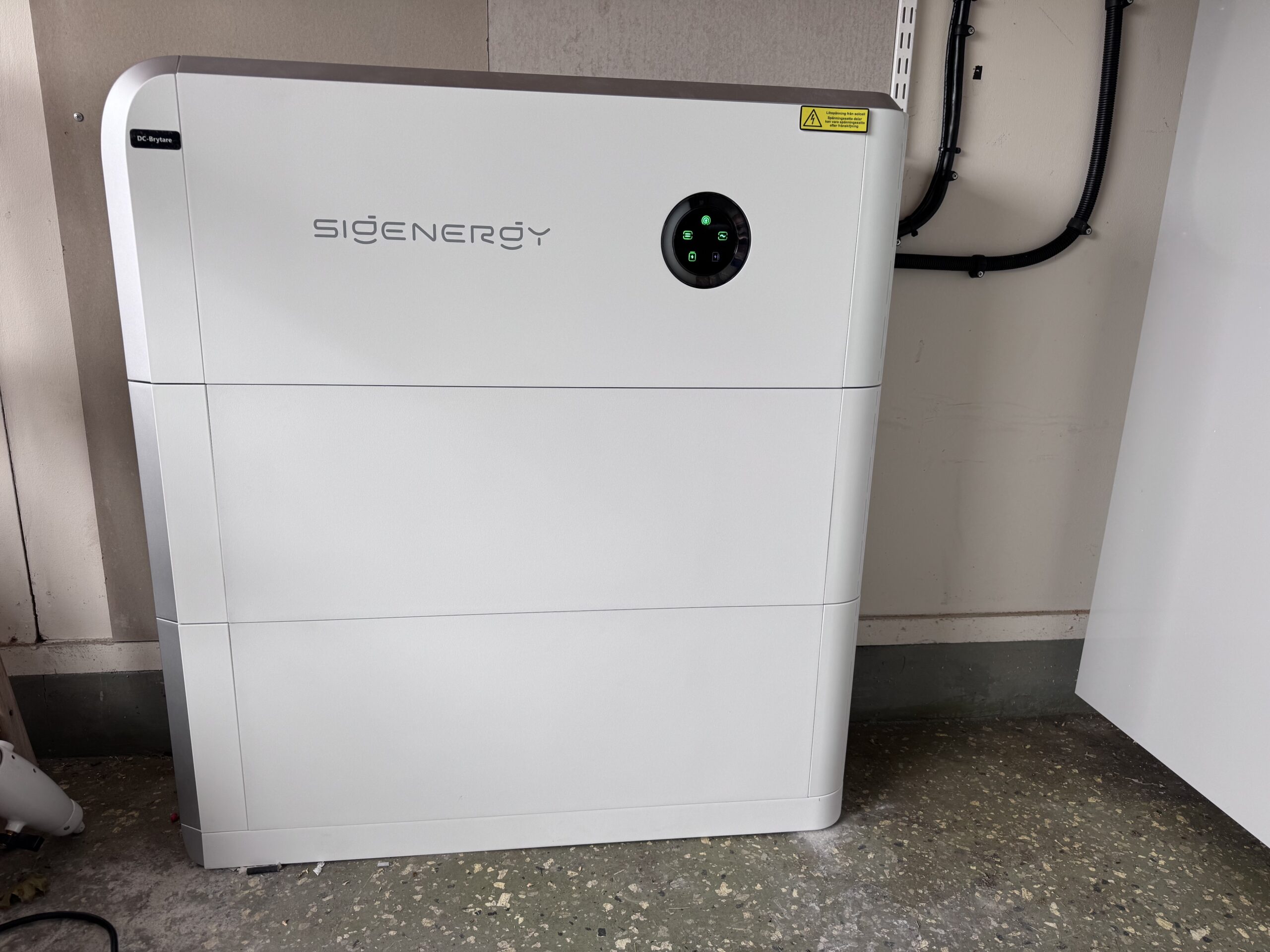
Why we installed inverter and batteries in our garage
Many choose to place the battery and inverter outdoors – but we saw several advantages in having them in the garage:
Better protection: Less wear from sun, rain, snow, and temperature fluctuations.
Longer lifespan: A stable indoor environment contributes to more consistent operation and reduced strain on the components.
Easier maintenance: Everything is located together and easily accessible if service or updates are needed.
Less noise impact: Any fan noise from cooling is less noticeable.
For us, it therefore felt natural to place both the inverter and the battery modules in the garage – even though they are in fact built to withstand much harsher conditions.
